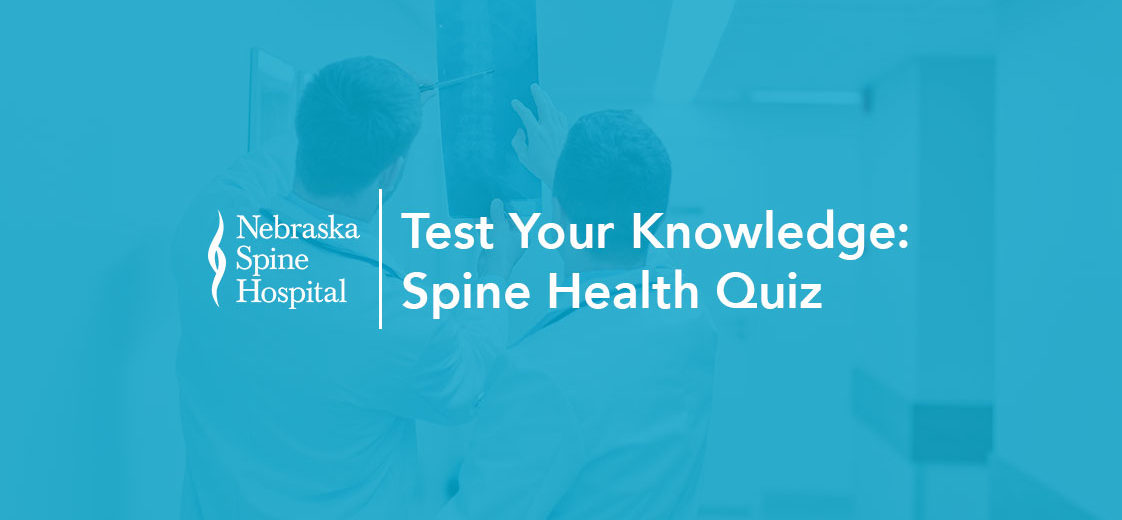There is so much misinformation circulating about spine health and back pain that we decided to create a spine health quiz. Try to guess whether the statements below are true or false before continuing to read for the answer.
Most people will experience back pain in their life.
True. Nearly 80% of people will experience back pain at some point in their lives. It is more common as you age, with many reporting that they began experiencing back pain in their 30s or 40s.
Realistically, most back pain isn’t a cause for concern, aside from being uncomfortable and disrupting your daily routine. Acute back pain, or pain that lasts less than 6 weeks, often resolves itself within a matter of hours or days. Strains or tight muscles are often at the root of this type of pain.
You Might Also Like: Back Pain Awareness
Only adults experience back pain.
False. While it’s true that adults are more likely to experience back pain, kids can still have back pain. Kids’ spines are much more resilient and flexible than adults since they haven’t endured years of wear and tear.
Younger kids are less likely to engage in activities that stress their spines. And, if they do happen to stress their spine and it results in back pain, young kids tend not to repeat behavior that hurts. By not re-engaging in the behavior, they are helping to speed up the recovery process.
As children age, they tend to participate in sports more aggressively and test their limits, increasing the risk of injury to their spine. Once injured, older kids and teens will often listen to the advice provided for recovery, such as minimizing activity. However, once healed, they often return to the activities that caused the initial injury. This tendency can result in overuse injuries.
You Might Also Like: Back Pain In Kids
A slipped disc means it has fallen out of place.
False. The spine is made up of vertebrae and in between each vertebra, there is a disc that provides cushioning between the bones. Think of that disc as a jelly donut – it is comprised of an extremely soft interior and slightly tougher exterior. With a slipped disc, the soft inside pushes through a small tear in the exterior. When it does, it might put pressure on a nearby nerve, sometimes resulting in pain.
You Might Also Like: Herniated Disc: What Is It And What Causes It?
The best way to treat pain is by resting.
False. Believe it or not, resting can actually worsen your back pain. While short rests can help with acute pain, we generally advise against more than a couple days of bed rest. Physical activity helps stimulate healing in the spine by promoting the exchange of nutrients between the discs and the rest of your spine. When you aren’t regularly active, your spinal discs can be deprived of the nutrients they need to function properly.
You Might Also Like: Back Pain Relief At Home
Adults can develop scoliosis.
True. While the most common type of scoliosis occurs in adolescents, accounting for 65-75% of all cases, the risk of scoliosis doesn’t completely go away. Degenerative scoliosis occurs when there is significant degeneration of the facet joints and intervertebral discs in your spine. This degeneration happens over time and can begin as young as 40 but is most common in adults 65 and older.
You Might Also Like: Degenerative Scoliosis 101
If you made it through the entire spine health quiz, don’t forget to share your results with us on social media. We’re on Facebook, Twitter, and Instagram.
This spine health quiz is meant to be a fun way for our patients to learn more about their spine, but shouldn’t be viewed as professional medical advice.

